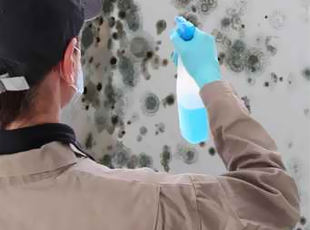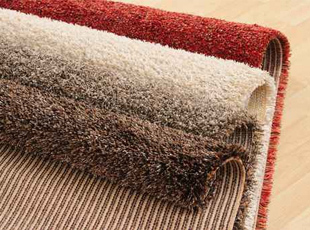 Life today is challenging, one reason for this is that we are all facing exposure to a large number of unseen/invisible toxins in the form of:
Life today is challenging, one reason for this is that we are all facing exposure to a large number of unseen/invisible toxins in the form of:
chemicals, metals, and pesticides which can all be found in our homes, workplace, our food, water, our environment and the air we breathe.
You cannot see any of these substances and it is almost impossible to avoid exposure and ingestion on a daily basis.
It certainly is possible to reduce your exposure and ingestion, by being mindful of eating organic foods and using natural chemical free products where possible.
However you would really have to take extreme measures to be completely free from exposure.
So for most of us the answer is the middle path. Try and reduce our ingestion of pesticides and chemicals, use natural products and consume organic foods where possible.
Please be clear, even some of these so called ‘Natural’ products may not be completely free from toxins; however you would certainly be able to reduce your ingestion of, and exposure to, a good number of toxins.
Regular Detox
Good health needs a plan!
Many of our clients who are wanting to detoxify, initially have the idea that they can adopt a Diet-Like approach.
Let me just undertake a detox programme for a week or two and this should do the trick.
However as previously mentioned, our exposure to, and ingestion of toxins occurs on a daily basis.
So we need to build a detox regime into our lifestyle if we are seeking to successfully manage this problem.
When we exercise to stay fit and healthy we do not just hit the gym once and say that’s it. Of course not, we have a routine and will exercise regularly to maintain good health.
Similarly to incorporate a regular routine of Far Infrared Thermal Therapy into your lifestyle will go a long way to helping you maintain good health.
The Toxins in Your Home
”Did you know that Air circulating in the home contains more than 900 chemicals, including mould, which can increase a person’s risk of developing heart disease, cancer and asthma.”**
Indoor Mould
 Mould can be found in the home particularly where dampness prevails; damp spots on the wall, and windows.
Mould can be found in the home particularly where dampness prevails; damp spots on the wall, and windows.
This tends to occur in houses with poor ventilation and can lead to respiratory problems such as Asthma.
One of the most unknown causes of widespread neurotoxic illness is caused by mould.
Mould is a big problem mainly due to modern constructing methods.
- Most mould is unseen.
- If your house is damp or your basement gets wet, you have mould if there is water there is mould.
- 25% of the population is sensitive to toxins produced by mould.
Symptoms of mould toxicity can be: morning stiffness, brain fog, fatigue, sleep disturbances, digestive issues, and trouble seeing at night.
Solution: Reduce household humidity levels to less than 50% to eliminate mould, using dehumidifiers, improving household ventilation, heating and insulation.
VOCs
A lot of household cleaning products contain chemicals known as volatile organic compounds (VOCs) which can trigger asthma and are found in air fresheners, carpet cleaners, polish and oven cleaners.
Building Materials

Paint is one of the biggest offenders and can contain lead and formaldehyde which can cause breathing difficulties, increased blood pressure and joint pain.
Asbestos is the name of a group of minerals with long, thin fibres that are so small you can’t see them.
If you disturb asbestos, the fibres can float in the air. This makes them easy to inhale, and some may become lodged in the lungs.
New Carpets

Did you know new carpets can contain over 200 chemicals, and when new will offgass into the air that you are breathing in.
The toxic chemicals are present in glues, and dyes and are often in the form of Volatile Organic Compounds (VOC’s)
Polybrominated Diphenyl Ethers (PBDEs)
PBDE’s are being used throughout the home in the form of flame retardants. Many fabrics in our homes have been treated with PBDE’s; curtains, carpets, and furniture.
These are being phased out but are still used in North America.
PBDE exposure has been associated with: thyroid hormone disruption, impaired memory, cognitive dysfunction, behavioural changes, reduced sperm count, and foetal damage to mention a few of the problems.
How to Reduce Toxins in Your Home
Use Natural Cleaning Products – Always Check labels as even some ‘so called’ natural products still may contain unwanted chemicals.
Avoid Using Pesticides – Try non-toxic alternatives
Use Houseplants for Reducing Airborne Toxins – NASA have identified various plants that are good for absorbing airborne toxins and cleaning the air.
The plants identified by the NASA clean Air Study can remove:
Benzene, Formaldehyde, Trichloroehtylene, Xylene, Toluene and Ammonia.
You will need at least one plant for every100 square feet of home or office space to achieve the desired Air Cleansing.
Change A/C filters regularly – depending on use.
Personal Care Products – Use chemical free shampoos, soaps, toothpaste, cosmetics and anti-perspirants.
This is really inportant as any product you use on your skin will deliver any chemicals directly into the blood stream!
Avoid Artificial Air Fresheners & Synthetic Fragrances
These tend to pollute the air you are breathing.
Test Your Tap Water: Where contaminants are found, install water filters.
Ensure the House is Well Ventilated.
